The Big Review: Boss DM-101 — the new benchmark for analogue delay?
It’s taken a long time, but the first genuinely new delay model from Boss in decades is a big statement

Review Overview
Our rating
9
Our verdict
In case you didn’t notice, Boss is all about delay in 2023: this is its third big delay pedal release this year, catching a lot of us by surprise. And the first genuinely new model after the reissues in pedal form of the digital SDE-3000D and modelling-based RE-202 and RE-2 Space Echoes. But the Delay Machine might just be the biggest of the trio; it’s analogue and a very bold statement indeed.
- READ MORE: The 10 best delay pedals to buy in 2023
The specs have even had a lot of fellow pedal designers like Josh Scott thoroughly wowed and fluttered: eight Bucket Brigade Device chips, 12 delay modes with modulation options for each, onboard presets, tap tempo, stereo output for six of the modes and MIDI. It’s as if Boss’s design team suddenly realised it had only put out the Waza Craft DM-2W since its last analogue delay pedal in 1988 (the DM-3) and scrambled. The truth is an analogue delay pedal with this kind of spec set is ambitious in its mere existence. But does it actually deliver on the pedalboard?
We love the retro look; carrying on from the RE-202, it’s a homage to those hallowed black and silver dream machines of the seventies; Boss’s very first pedal, the CE-1 Chorus Ensemble in 1976 and its first delay, the DM-1 in the following year. Except now there’s a lot more knobs and three times as many footswitches. And you’ll need them all to take a ride down this BBD highway.
In Use
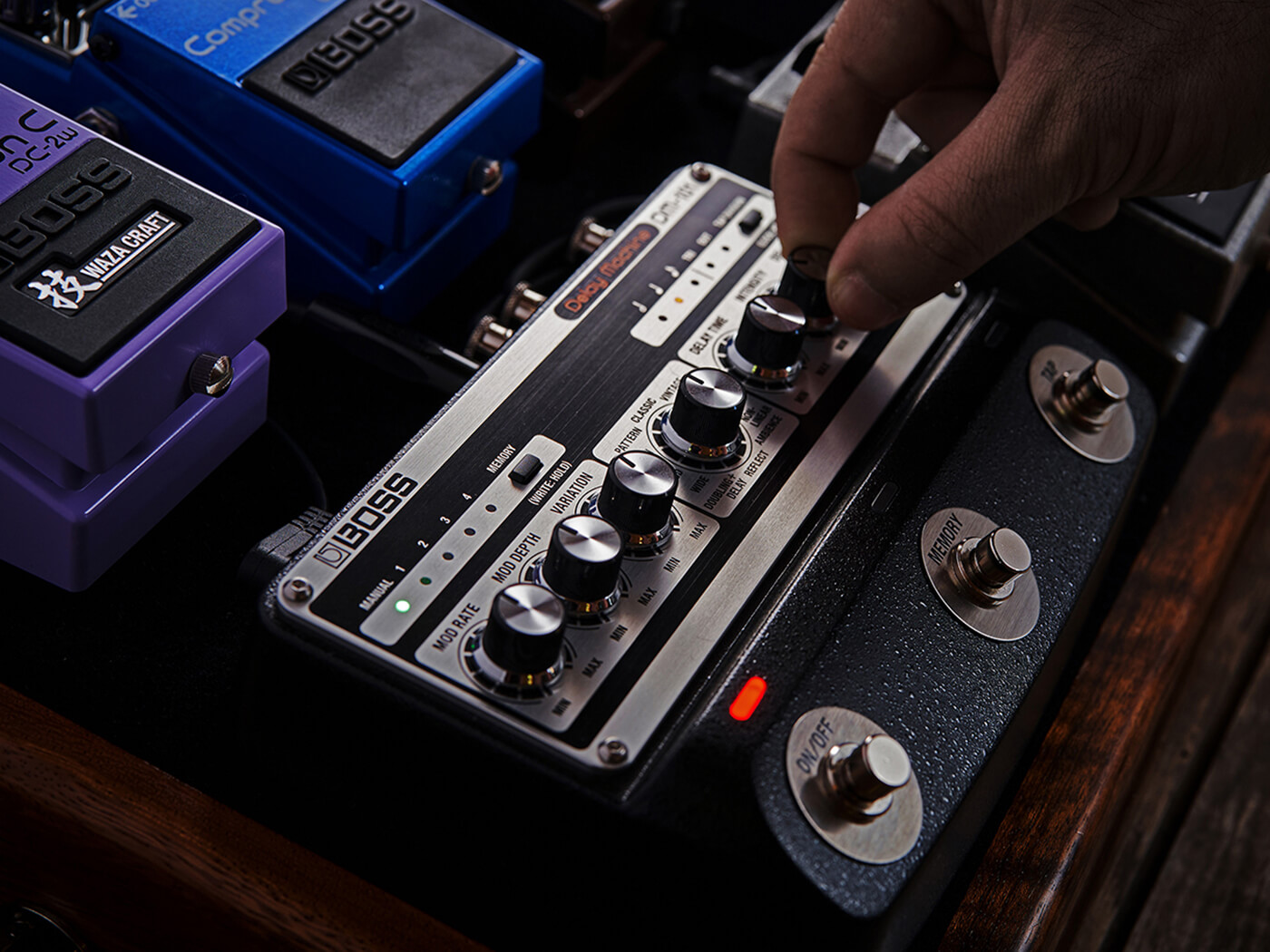
While a whole strain of big box digital delays (including Boss’s own flagship DD-500) have had to bring in digital screens to help manage their workflow, the DM-101 is all hands-on physical controls, despite the ingenious digital CPU that is running its many-faceted show. And none of these controls are luxuries; you’ll use every one to craft your sounds. And you’ll enjoy it!
Along with the expected Delay Time, Intensity (feedback / repeats) and Delay Volume are Modulation Rate, Depth and the mysterious ‘Variation’. Next to the Tap Division menu in the top right that allows specific division and note interval options for each mode, this is the only area where we needed the manual to really understand our options. Because Variation lives up to its name by performing different tasks depending on which of the 12 modes you’re in; and these include ten different head combinations in the Multi-head mode – yes, it’s got a multi-head tape echo-esque mode, just to make RE-202 adopters more jealous. In the Vintage DM-2 mode it changes the waveform and alongside modulation and tap tempo it offers a new experience with Boss’s first classic compact analogue delay that wasn’t previously possible.
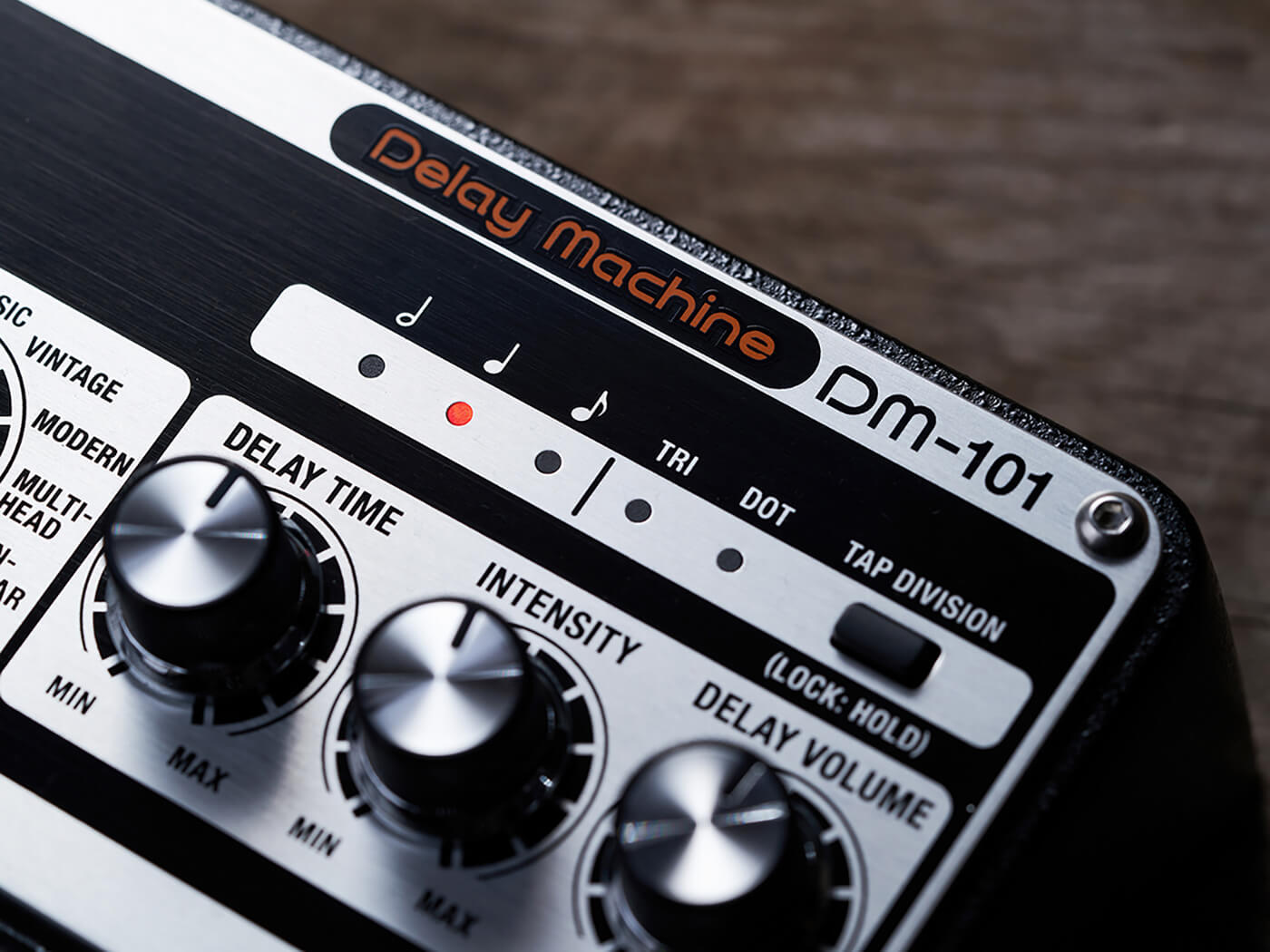
Even more impressive is this analogue circuitry has achieved up to 1,200ms of delay time in the Classic mode. All impressive, but specs don’t really count for much in a pedal if it doesn’t inspire and delight in use.
Warm Reception
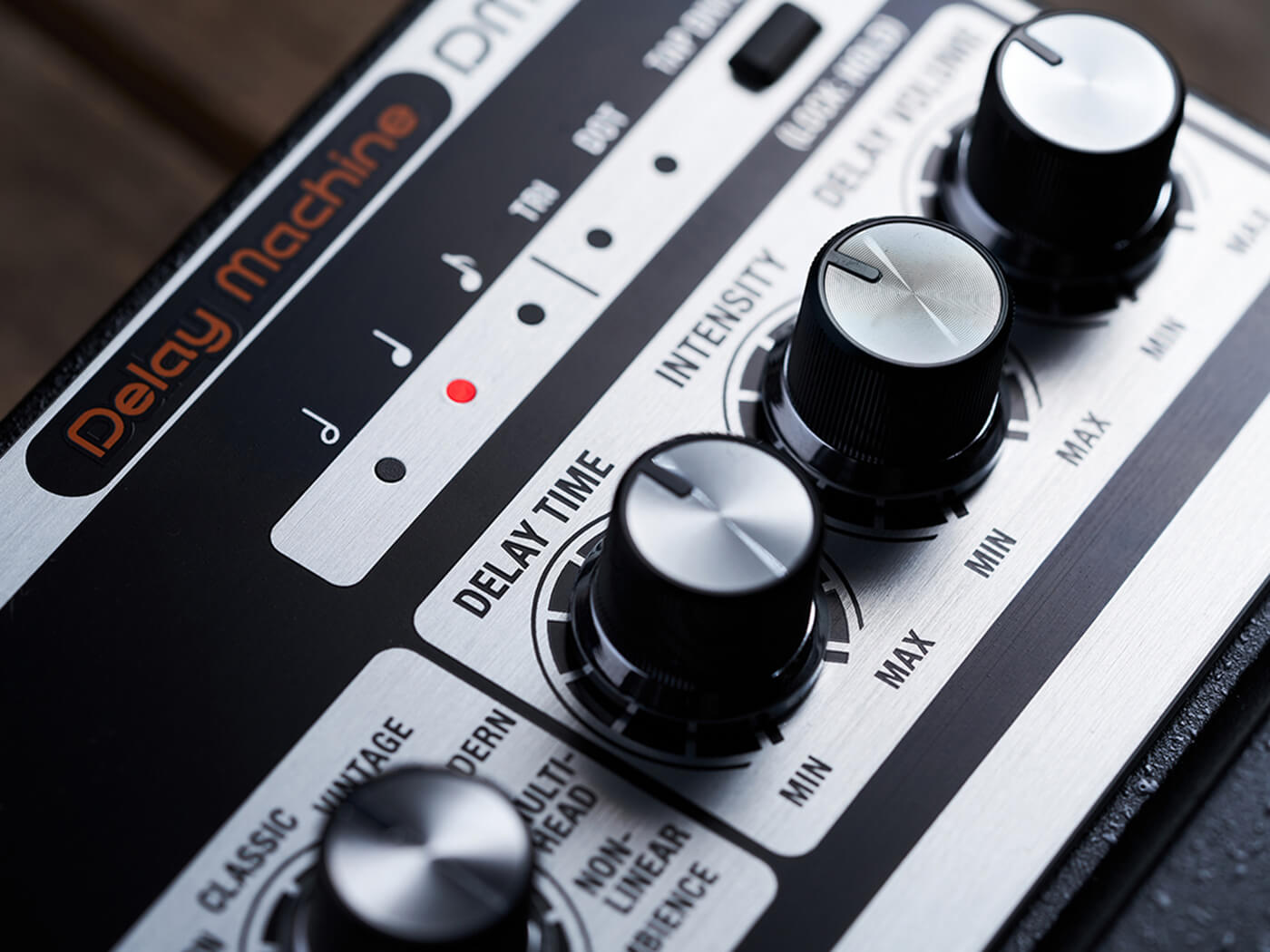
In that sense it’s tempting to see the DM-101 as the analogue delay answer to Strymon’s Timeline; a bells and whistles pedal that gave all the indications of being a modern classic on its emergence over a decade ago, and continues to prove it. The key isn’t just the specs and the scope of sounds available, but the ease of workflow too. Good news there; the Delay Machine ticks all those boxes.
It works with you; it’s easy and logical to use in the way Classic Boss has always been and it sounds glorious, creating a warm presence and bed for your playing that just feels right and intrinsic. It’s a very musical delay that could claw anyone into its charms who might consider this type of effect an occasional habit.
A little goes a long way with the modulation and as you’d expect from Boss as the early masters of the (Waza) craft, its capable of subtlety and queasy listening, but we kept working from the nine o’clock position of depth and rate, enjoying how it stirred each mode, then dialling back when it started to become conspicuous for the wrong reasons. But it always feels part of the core sound here, rather than a bolt-on.
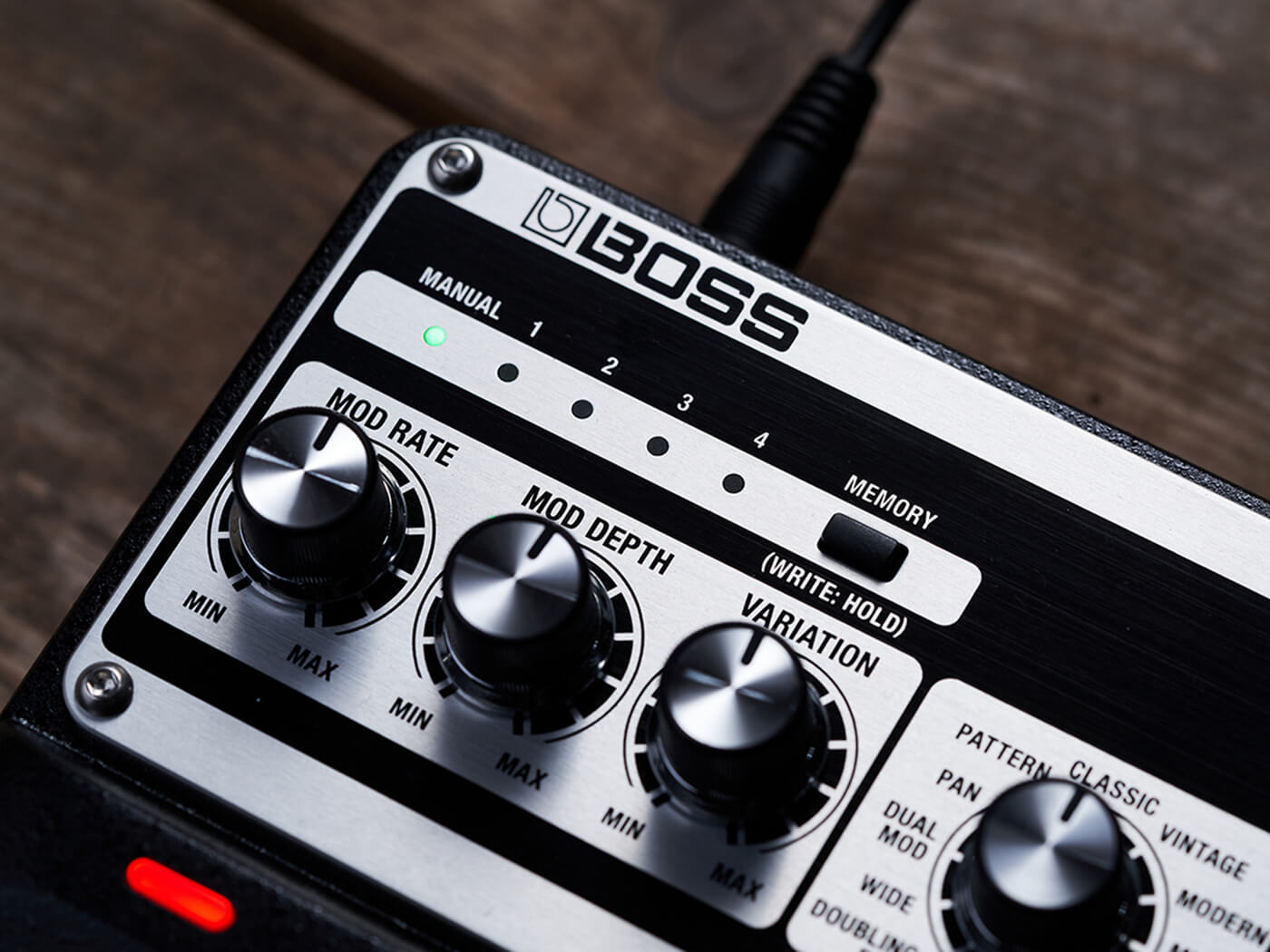
And those modes… everything you could need from analogue delay is here to get lost in. From the reverb-esque Ambiance to solo-thickening and rockabilly-rousing Reflect and Double Delay and glorious sci-fi stereo sounds of Pan, that happily thrives on that line between spectacular and jarring. The character and presence here is something you don’t want to switch out of the signal, it’s a comforting warm cloak and you feel like you’re losing some of the life of your tone when you do turn it off. So naturally we dial in presets that can work for more of an always-on approach, as well as more dramatic parts; along with the Manual mode that allows for five different sounds in total. And yes, sometimes you just twist the Intensity control because you love the oscillating sound of falling into the void – who’s judging?
Full Effect
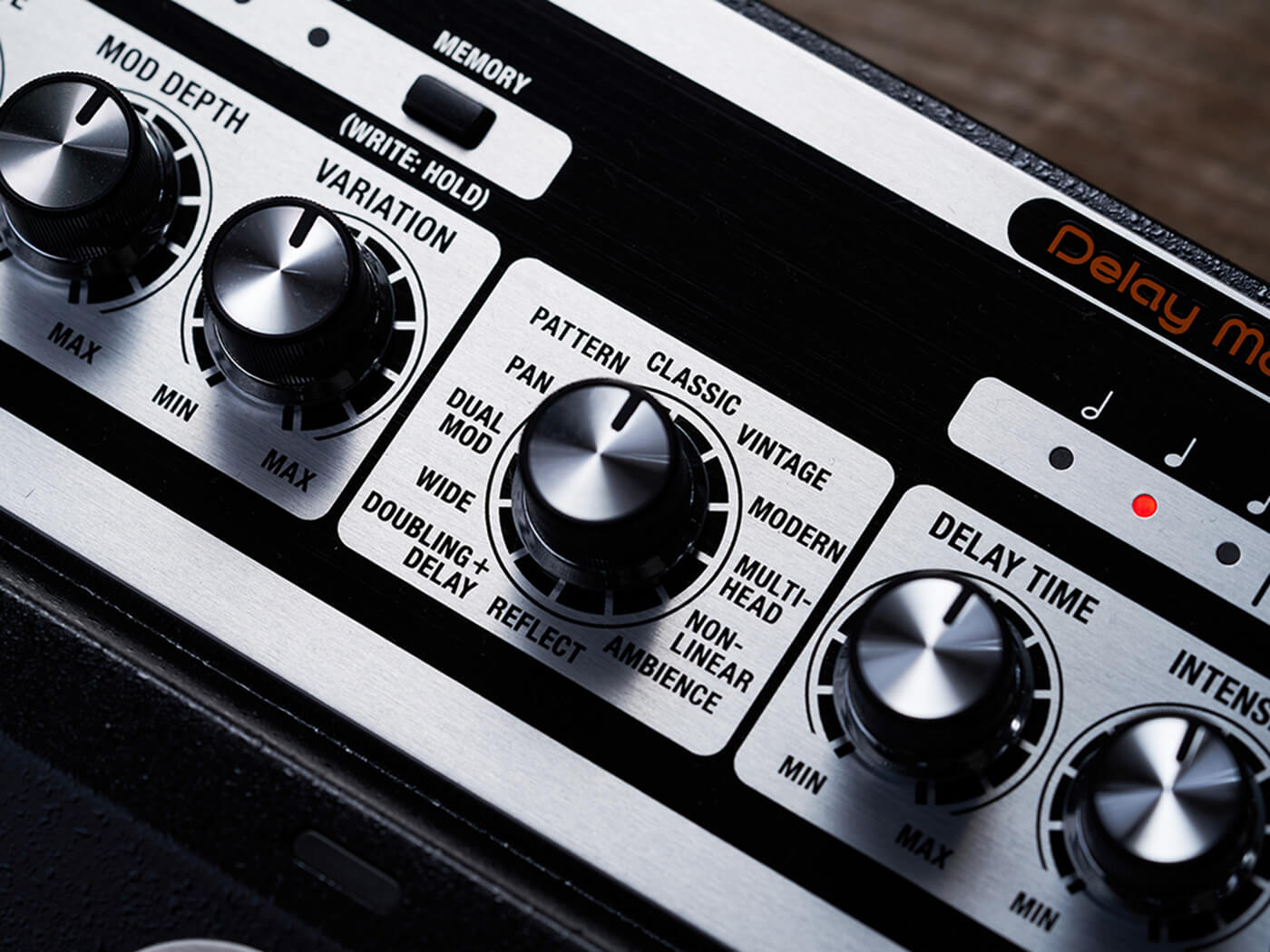
The second half of the modes offer stereo out and to really enjoy the full glory of this pedal; but beyond headphones, and what the guitar forums suggest, the majority of us don’t have stereo amp rigs. By that measure, the lack of stereo-in to take advantage of your modulation and reverbs in full effect is less of an issue. But its inclusion would likely have added significantly more processing requirements and cost to an already pricey pedal.
The lack of a tone control or low pass filter on this pedal could be more of an issue for some players, because it gets so much right elsewhere. While the warmth of analogue is great and makes for that atmospheric sound bed and tangible presence, it can also lead to a darker tonality that can suffer in a band mix where players need extra clarity in their repeats. This kind of degradation is part of the BBD deal, and we think the low end of the DM-101 is especially intrinsic to its appeal. It isn’t muddy but experiences will differ; it was much less of an issue with our test Firebird and Tele than an SG; you could foresee possible issues with the latter in certain live scenarios on the neck pickup.
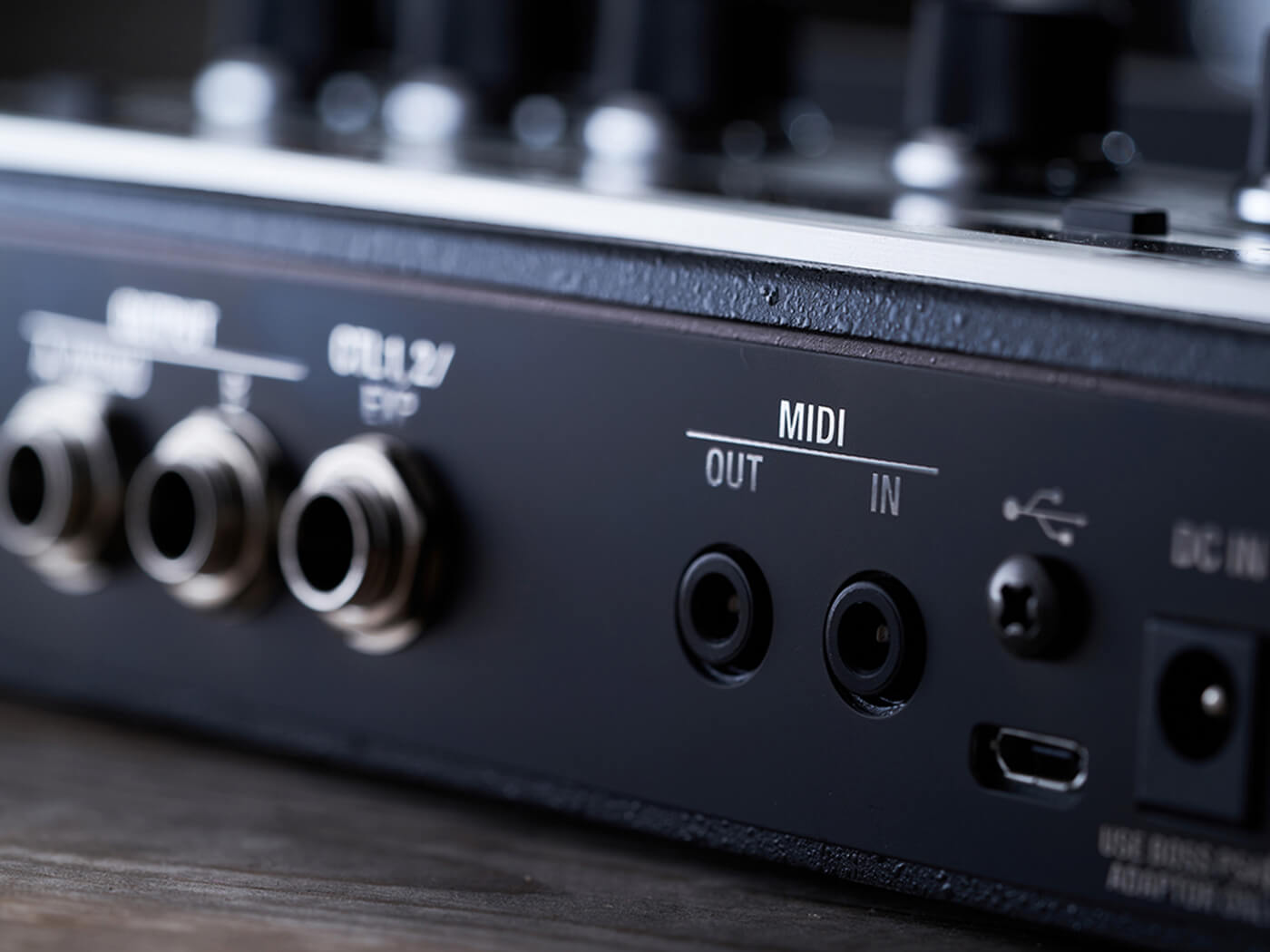
Clearly it’s something other brands are aware of; we’d wager some of the ongoing appeal of the Electro-Harmonix Deluxe Memory Man has been its comparative brightness compared to other analogue delays, while MXR released a Bright variant of its Carbon Copy and its Deluxe version has a bright mode. The pricier Suhr Discovery is a rare analogue delay pedal that offers lo and hi cut controls.
But the other side of the argument is there’s digital emulations of BBD for those who need more control over clarity, and that pushing too far for it may lose some of what makes analogue so alluring for many players. While a tone control option would have made this package pretty close to perfect for me, it doesn’t take away from the fact this is the best selection of BBD delay sounds I’ve heard on any pedal. And even our other wishlist feature of a preset back switch – which would have added another footswitch and made the pedal even wider – can be negated with assigning the footswitch input.
Is it worth $500? If you love analogue delay and use it a lot, yes it is. It’s also got the power to make the undecided true believers in the beauty of BBD. Long after the repeats fade out, the wealth of classic and creative sounds, ease of use, connectivity options and the addictive nature of analogue delay done right by Boss again are the lasting impressions here.
Key Features
- Price $499 / £449
- Description Analogue Bucket Brigade Device delay with 12 modes
- Contact Boss




